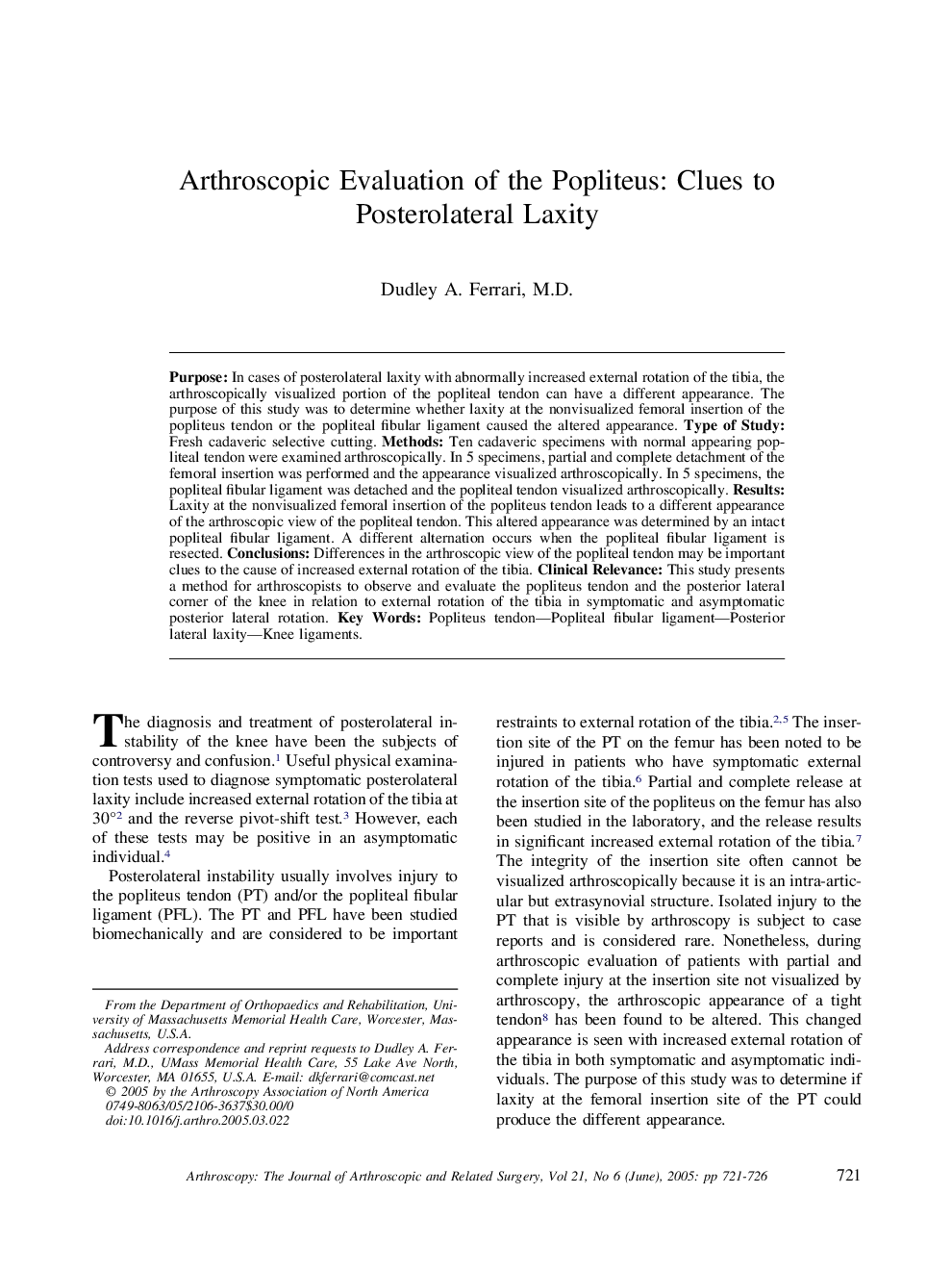| Article ID | Journal | Published Year | Pages | File Type |
|---|---|---|---|---|
| 10078997 | Arthroscopy: The Journal of Arthroscopic & Related Surgery | 2005 | 6 Pages |
Abstract
Purpose: In cases of posterolateral laxity with abnormally increased external rotation of the tibia, the arthroscopically visualized portion of the popliteal tendon can have a different appearance. The purpose of this study was to determine whether laxity at the nonvisualized femoral insertion of the popliteus tendon or the popliteal fibular ligament caused the altered appearance. Type of Study: Fresh cadaveric selective cutting. Methods: Ten cadaveric specimens with normal appearing popliteal tendon were examined arthroscopically. In 5 specimens, partial and complete detachment of the femoral insertion was performed and the appearance visualized arthroscopically. In 5 specimens, the popliteal fibular ligament was detached and the popliteal tendon visualized arthroscopically. Results: Laxity at the nonvisualized femoral insertion of the popliteus tendon leads to a different appearance of the arthroscopic view of the popliteal tendon. This altered appearance was determined by an intact popliteal fibular ligament. A different alternation occurs when the popliteal fibular ligament is resected. Conclusions: Differences in the arthroscopic view of the popliteal tendon may be important clues to the cause of increased external rotation of the tibia. Clinical Relevance: This study presents a method for arthroscopists to observe and evaluate the popliteus tendon and the posterior lateral corner of the knee in relation to external rotation of the tibia in symptomatic and asymptomatic posterior lateral rotation.
Keywords
Related Topics
Health Sciences
Medicine and Dentistry
Orthopedics, Sports Medicine and Rehabilitation
Authors
Dudley A. M.D.,
